What is an adaptation?
Adaptations are characteristics that enable organisms to better survive and reproduce.
What is biodiversity?
The diversity of biological organisms.
What is a habitat?
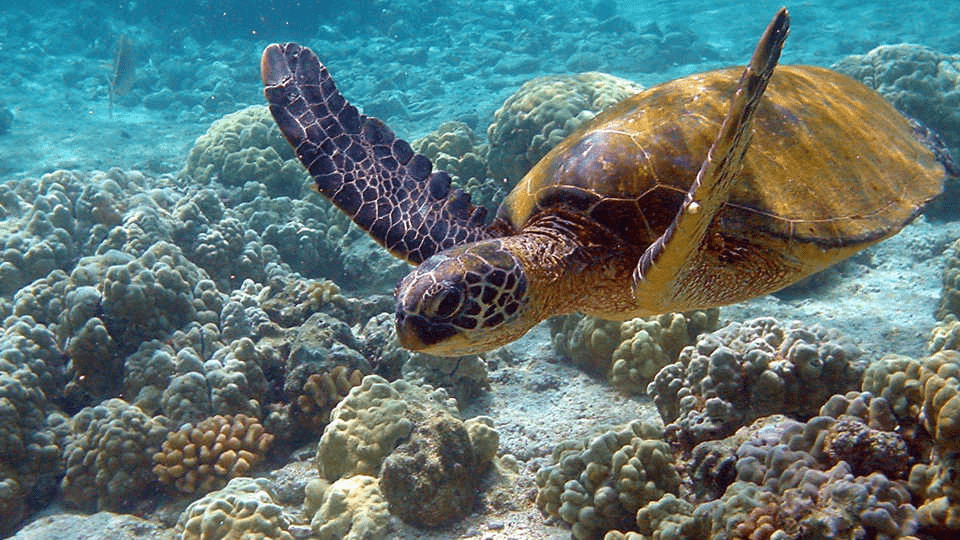
A place where an organism lives (e.g., has enough resources to survive and reproduce).
What does "trophic" refer to?
a. Light sensitivity
b. Tragedy
c. Nutrition
d. Sound sensitivity
Trophic = nutrition, feeding
In the tree lesson, we used a tool to help identify trees. What was it called?
a. Bilateral key
b. Dichotomous key
c. Trifecta key
d. Quadruped key
b. Dichotomous key.
A method of identification whereby groups of organisms (like trees) are divided into two categories repeatedly until an identification is made.
Why do we do ecological restoration?
To repair, restore, and recover a degraded ecological habitat or ecosystem.
Name the three types of adaptations and what they refer to.
Structural - a physical feature of an organism’s body having a specific function that contributes to the survival of the organism
Behavioural - what an organism does to survive in the unique conditions of its environment
Physiological - a physical or chemical event that occurs within the body of an organism that enables survival
Name 2 reasons why biodiversity is important.
High biodiversity maintains ecosystems processes we rely on for survival
High biodiverse populations at low trophic levels support higher trophic levels
Many more reasons!!... provisioning (food, shelter), regulating (climate, populations), supportive (nutrient & water cycles), and cultural (education, spiritual) benefits
How is a habitat different from a niche? 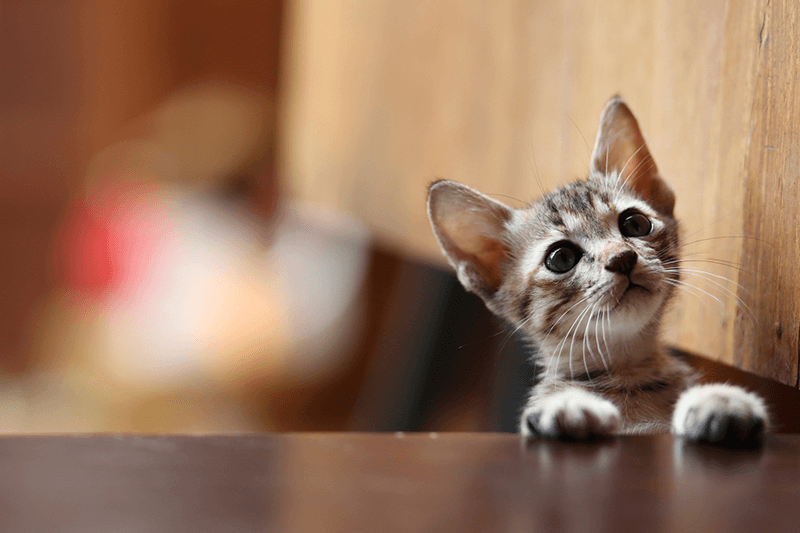
A habitat is where an organism lives, where a niche is moreso the role of an organism in that environment.
What do food chains, food webs, and food pyramids have in common?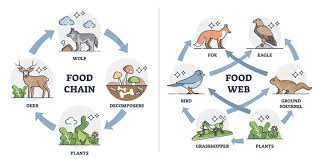

Models of trophic dynamics, such as species interactions and energy transfer.
What does abiotic mean? What are some examples of abiotic features?
Abiotic means “non-living” like physical or chemical features. Sunlight, temperature, moisture, humidity, wind, elevation are examples.
What is this plant? How is it best removed?
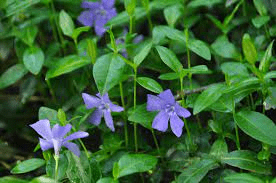
Common periwinkle--hand-pulling or with tools. Be sure to get all the root fragments out.
An owl nesting in upper parts of trees is what kind of adaptation? What does it help them achieve?
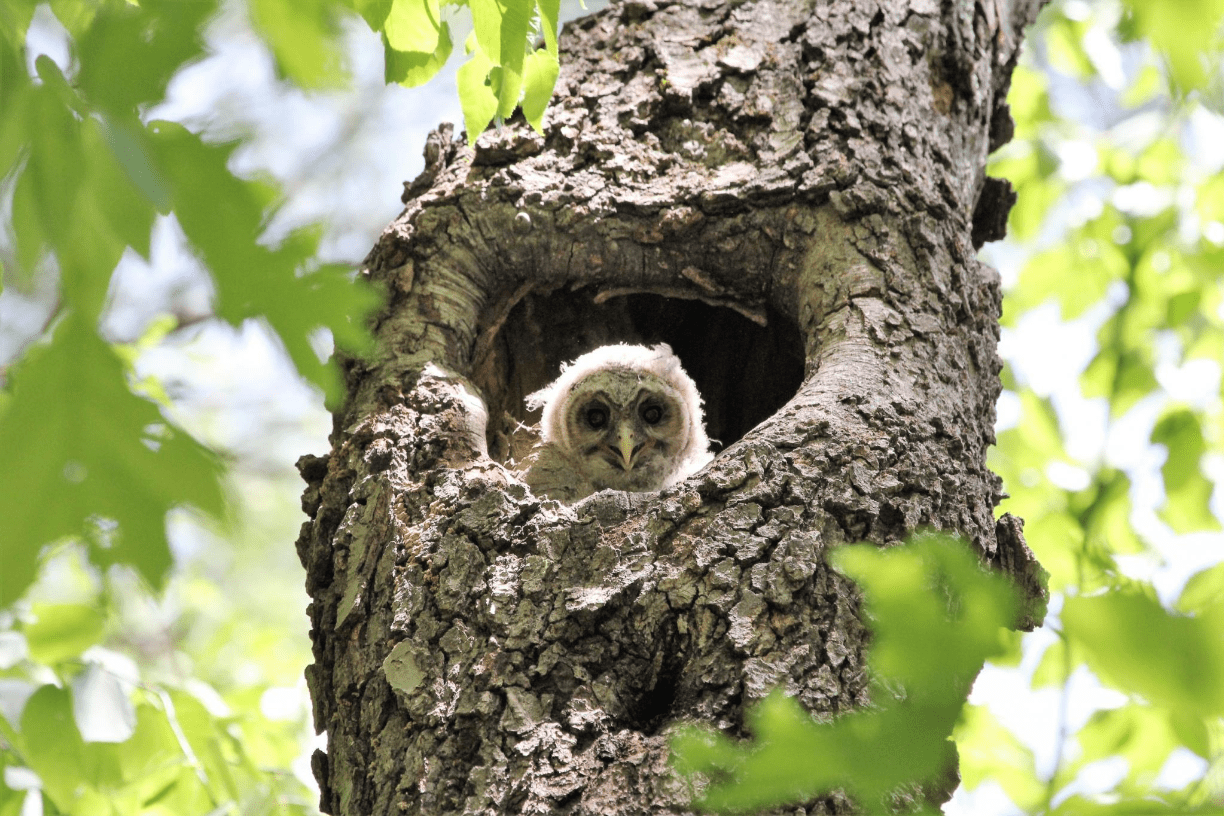
Behavioural, to stay out of a harms way (predator, disturbance, trampling, flooding, etc.)
What are the three types of diversity?
Genetic, species, ecosystem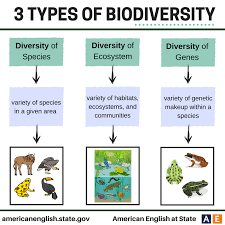
The niche is a multi-faceted concept. What are some aspects of the niche?
Hint: think of the WebQuest research for your index card... what did you look up?
An organism's niche includes things like:
> its role
> interactions with other species
> how an organism impacts the environment
> behaviour
> how the organism fits into the environment (adaptations)
> what the organism eats
> who eats the organism
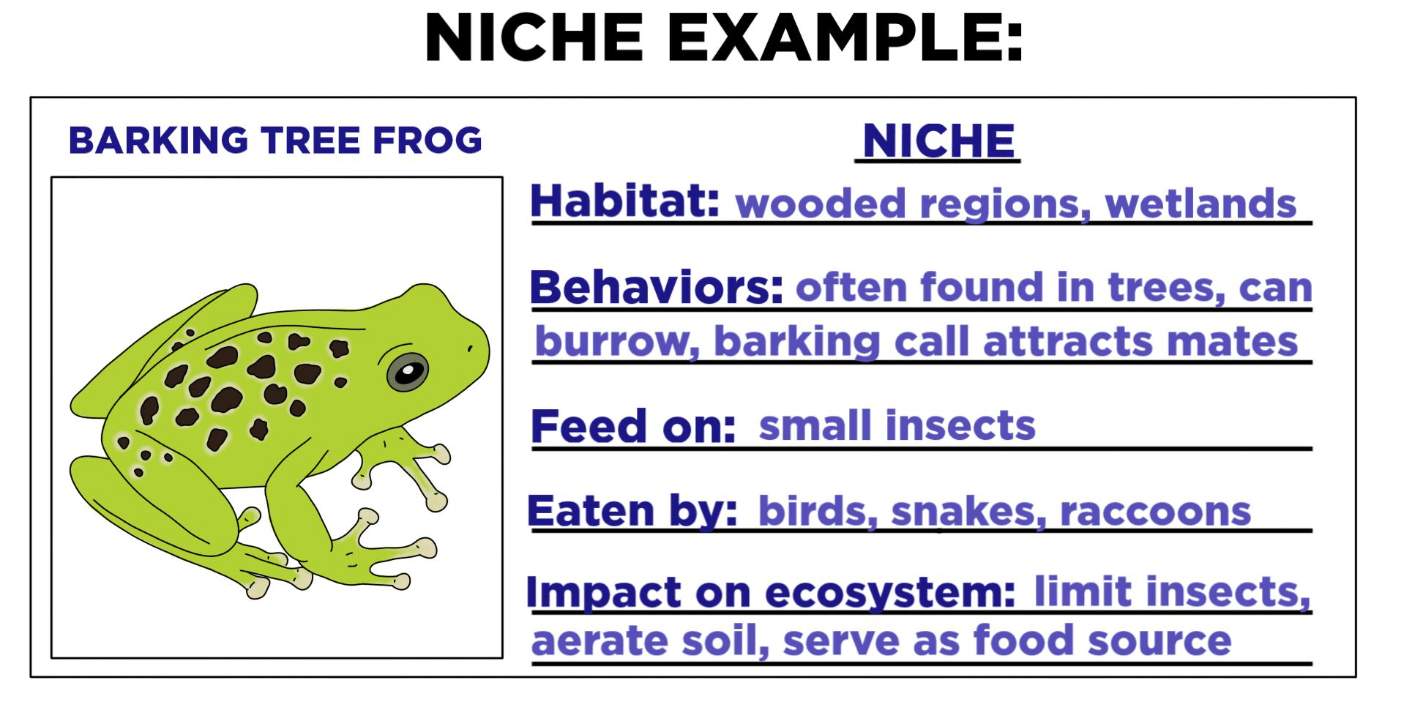
What is a key difference between a food web and food (energy) pyramid?
A food web shows the potential feeding interactions.
A food/energy pyramid shows how energy moves through trophic levels.
What is thought to be the leading cause of biodiversity loss? Name an example of this kind of loss.
Habitat loss.
E.g. losing trees through deforestation, losing habitat through urbanization, losing wetlands through draining for agriculture.
What is this plant and its proper removal?
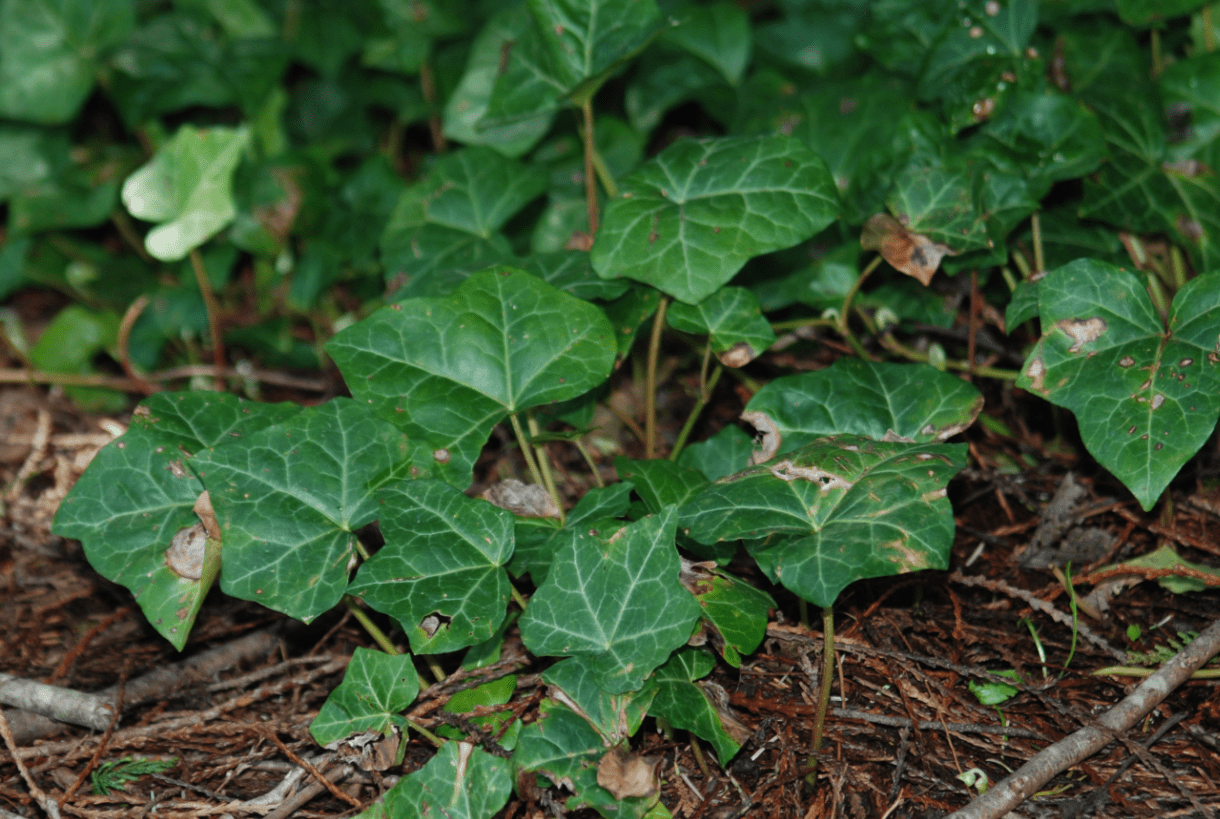
English Ivy--it can be pulled, bagged, and disposed of. It is important to remove as much of the root system as possible.
Camouflage could be which kind of adaptation? What does it help with?
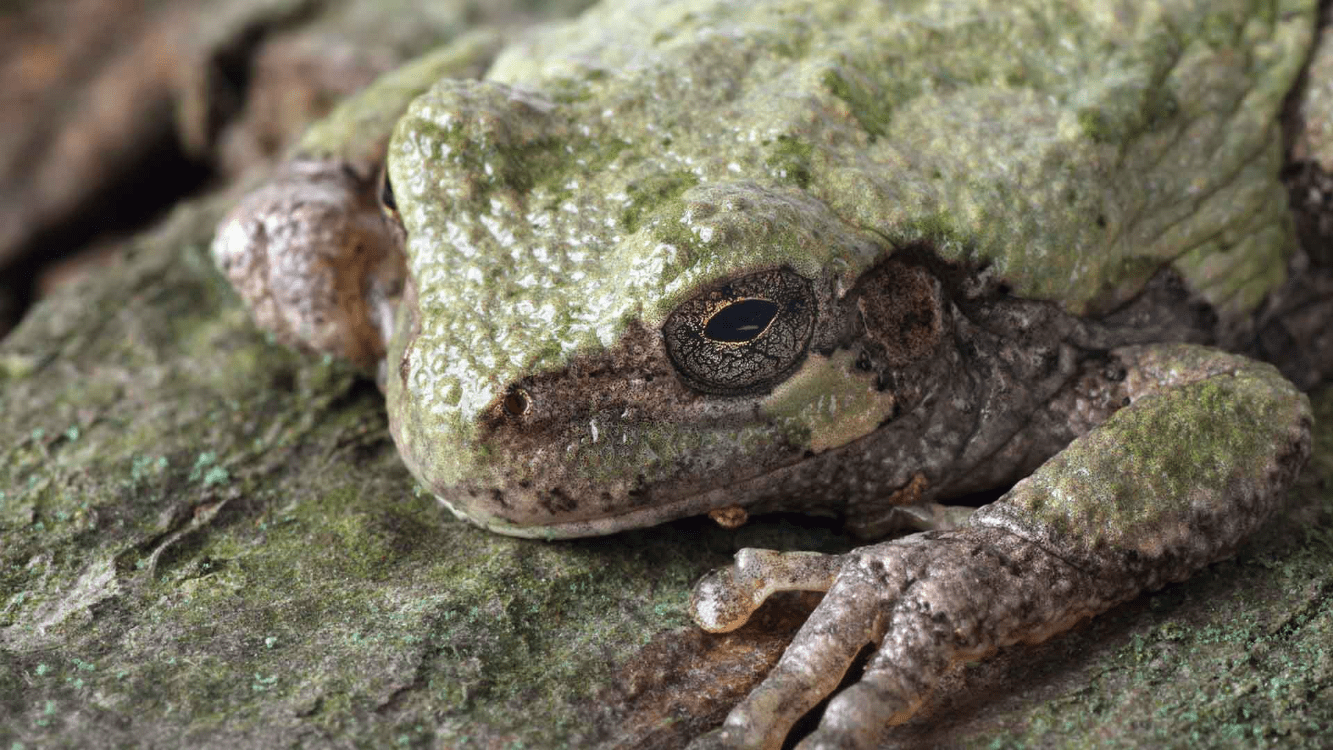
Physiological (the internal mechanisms that produce camoflauge capacity) + structural (a physical feature like colour that enhances survival)
What happens to biodiversity as you move up the ecological hierarchy? Why?
Biodiversity increases due to a number of reasons, for example:
> Larger spatial areas (ecosystems, biomes, biosphere) have more resources to support a wider range of species
> More habitats = more niches
> Larger spaces can support more interactions and a more stable food web
What happens when two species are occupying a similar niche?
Competition--they must compete for resources (prey/food, quality habitat, mates, etc.) within that niche
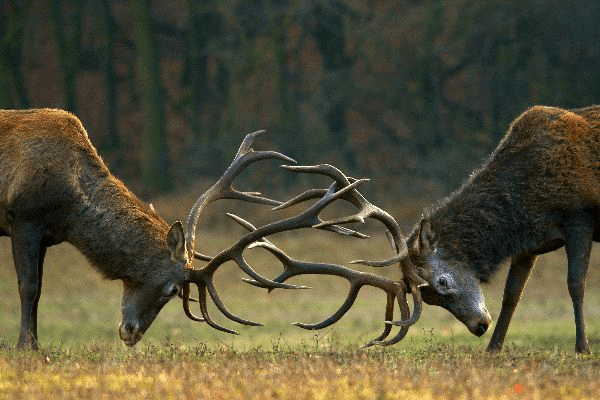
Name the four trophic levels and the role those organisms have.
First trophic level (bottom): producers, photosynthesizers
Second trophic level: primary consumers, typically herbivores
Third trophic level: secondary consumers, typically omnivores
Fourth trophic level: tertiary consumers, typically carnivores
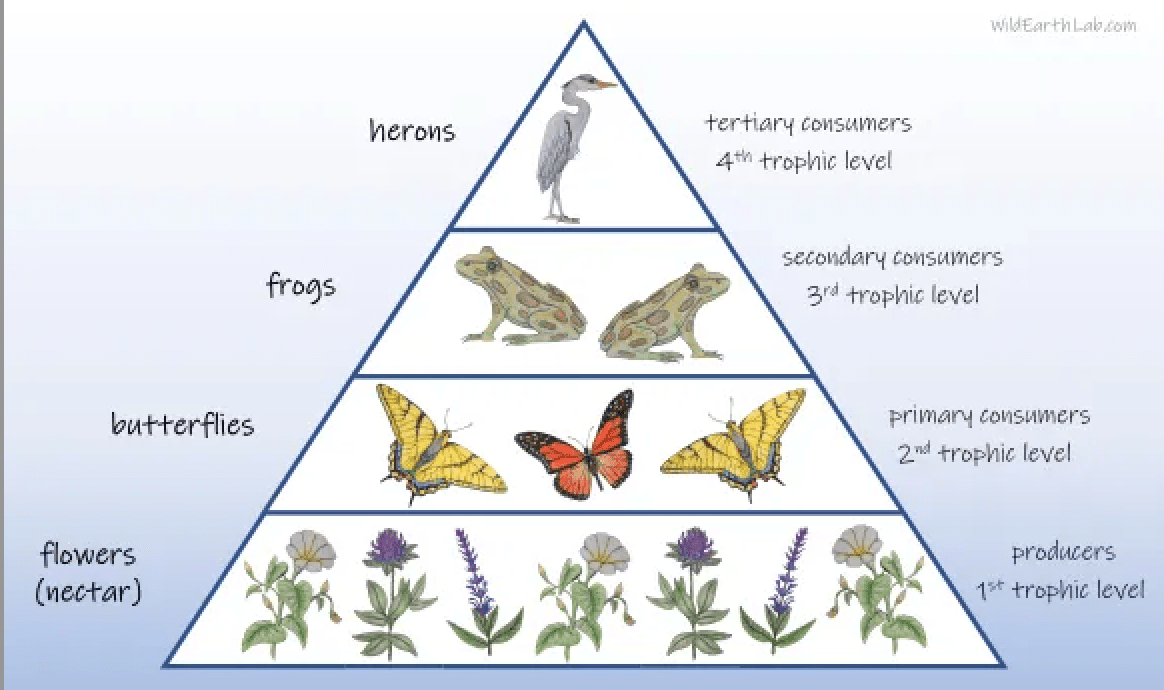
What is an ecosystem?
A space where living things interacting with the physical environment and with other living things, ultimately resulting in cycling of matter and nutrients (energy).
What is this plant? And it's proper removal?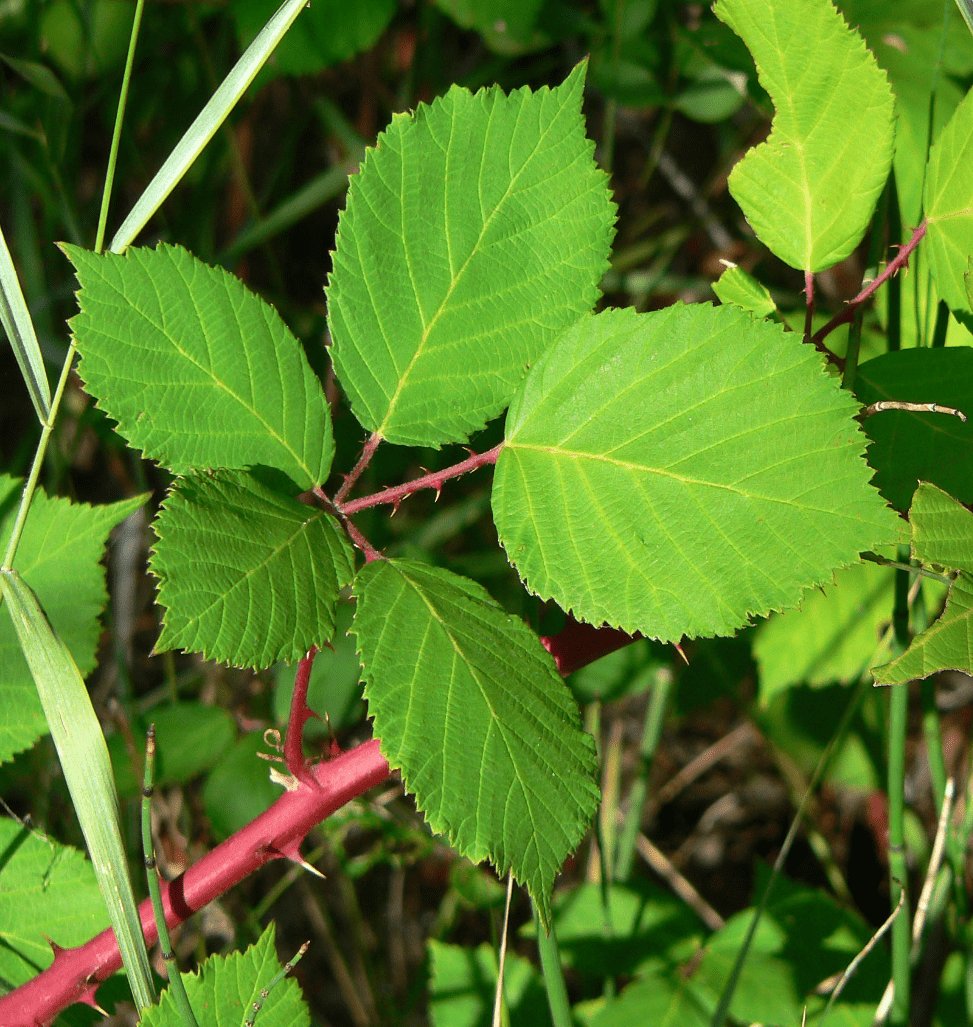
Himalayan Blackberry--hand pulling and using weeding tools can help remove blackberry and as much of the root system as possible to prevent resprouting. Gloves must be worn because of the prickles.
A heron’s long legs are what adaptation? What does it help with?
Structural—long legs to help the heron wade through water.
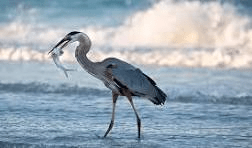
Western Scientists describe ecosystem services as services provided by ecosystems for us humans. How do some Indigenous perspectives frame “ecosystem services”? Why might the Indigenous framing encourage more responsible stewardship behaviour?
Viewing ecosystems services with the gift paradigm (Kimmerer). Gifts create relationships--less likely to waste a gift, take more than we need, or be careless with it. More likely to value gifts and use them fully.
Also things like kinship--if we understand that we are related to the natural world, we treat our relatives with respect and kindness.
Describe what this image represents.
Different species learn to coexist by occupying different niches within the same habitat (despite some niche overlap). Separated niches allow the birds to survive and prosper in the same habitat. The concept is often called niche or resource partitioning.
In this example birds are feeding at different parts of the same tree.
Using this food web diagram, pick out examples of different species interactions like mutualism, commensalism, parasitism, competition, predation, and coexistence (go beyond what the arrows are telling you).
How many can you find?
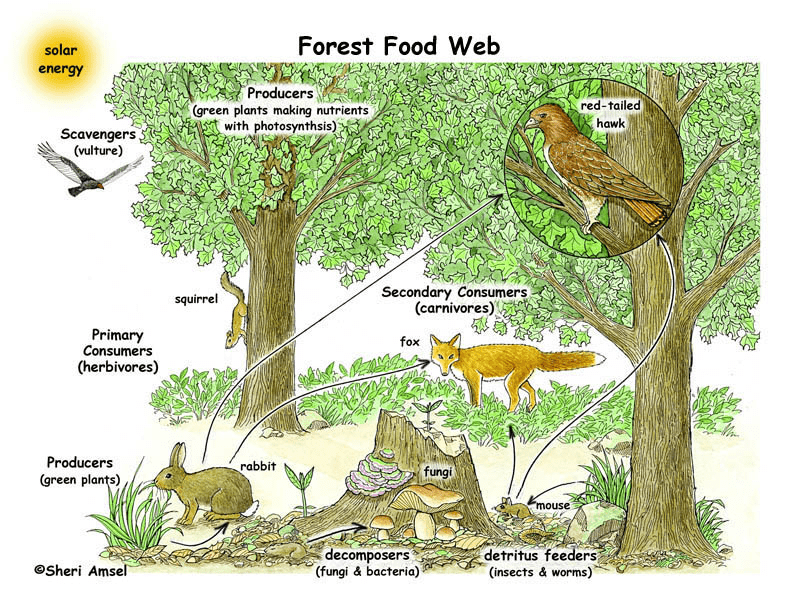
Answers will vary. Some examples below:
Mutualism: squirrel & tree
Parasitism: not found
Commensalism: worms/insects living in detritus; fungi & log
Predation: fox and rabbit; rabbit and grass; hawk and fox; fox and squirrel
Competition: rabbit and mouse
What are the six levels you learned of hierarchical organization? Rank them in the correct order from smallest to largest.
Organism, species, population, community, ecosystem, biome, biosphere.
What is this species and what is its proper removal?

Daphne. Because it can spread through seed or vegetative shoots, it must be bagged. Daphne is also poisonous, so gloves must be worn when removing.